Case 8
- Literature
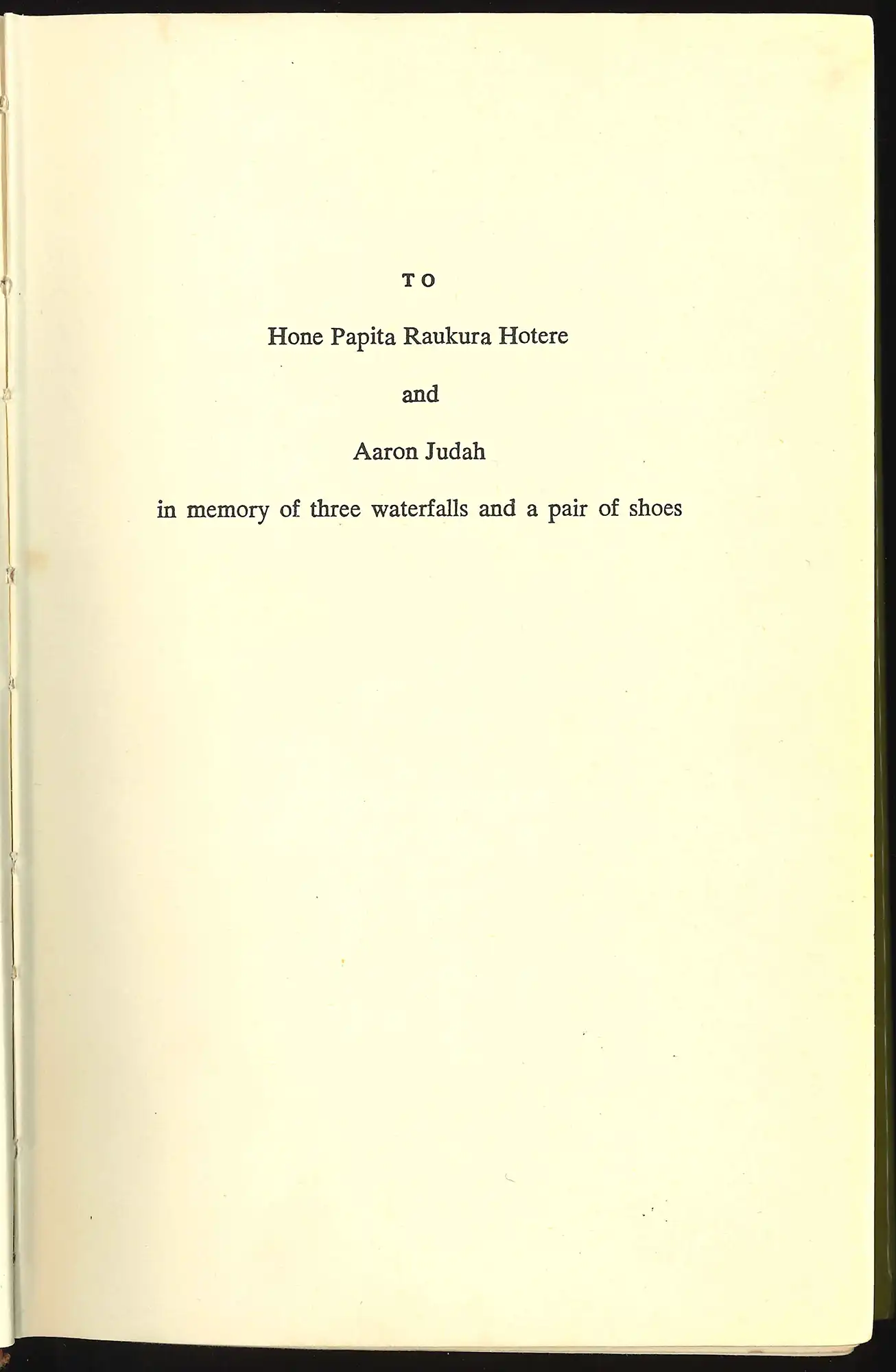
Don Berry, To build a ship. London: Victor Gollancz, 1964. SPRH 813 BER
In 1962, Hotere secured a fellowship at the Michael Karolyi Memorial Foundation in Vence, South France, a communal art institution established by the cosmopolitan Countess Catherine Karolyi (1892-1985). Offered an extension, he jumped at the chance. This enabled him to travel, paint, and exhibit in Europe for about two and half years. It was a pivotal moment in his development as an artist; he recognised that to paint was his life. At Vence, he also met Don Berry (1932-2001), the Oregon-born writer who talked of the burgeoning American West Coast beat scene. They hit it off. Berry later completed a trilogy, with the last work of his Oregon County series, To build a ship, dedicated to Hotere. At some time, this withdrawn title from the Auckland City Library’s collection came into his possession.
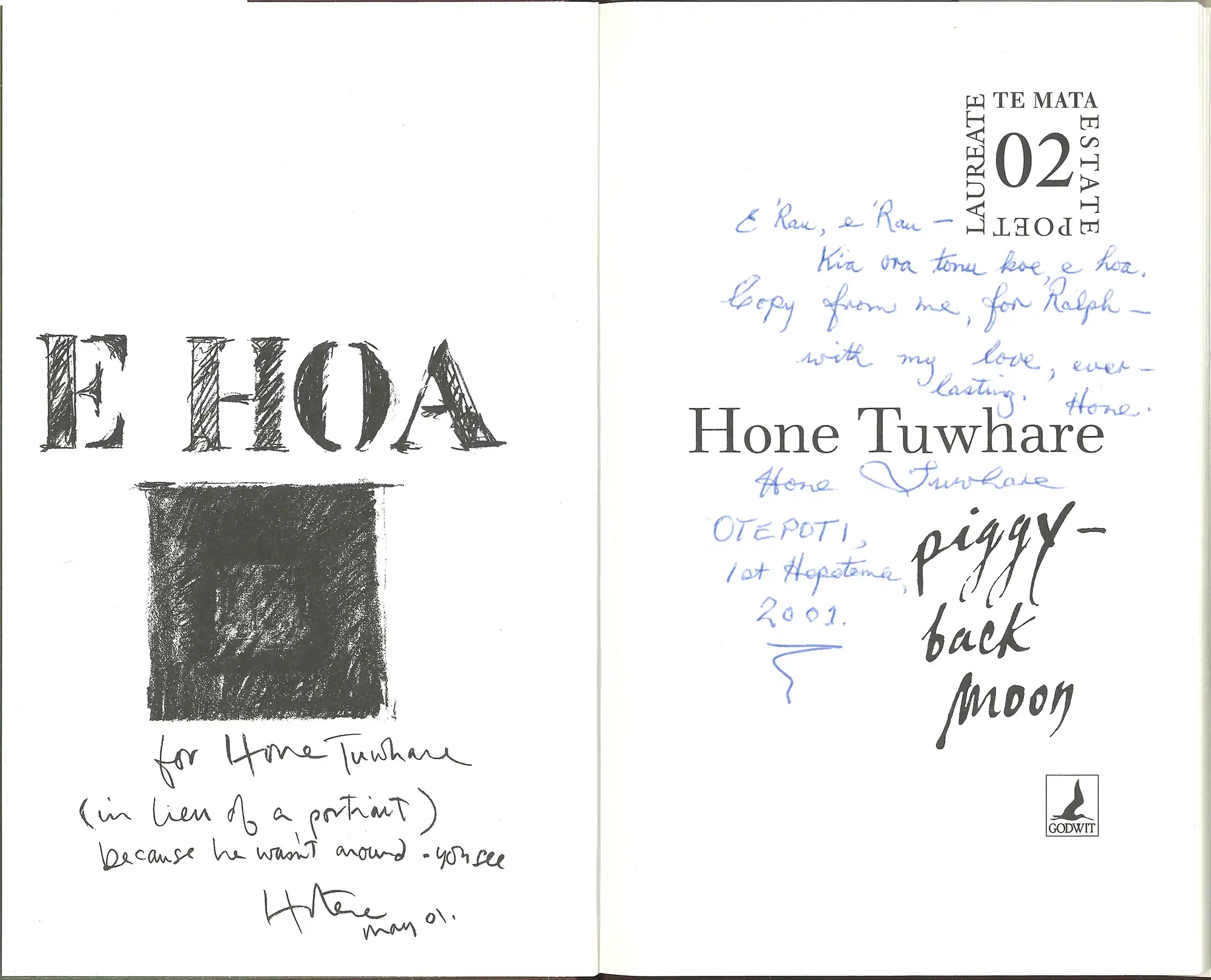
Hone Tuwhare, Piggy-back moon. Random House-Godwit, 2001. SPRH 821 TUW
Many books are bought by people and yet the proof of use, the actual reading of them, is notoriously difficult to nail down. In 2001 Hotere visited Rakiura (Stewart) Island. He took a copy of Hone Tuwhare’s Piggy-back moon with him and was photographed reading it. He obviously had two copies. The one on display has Tuwhare’s fulsome inscription to his friend Ralph.
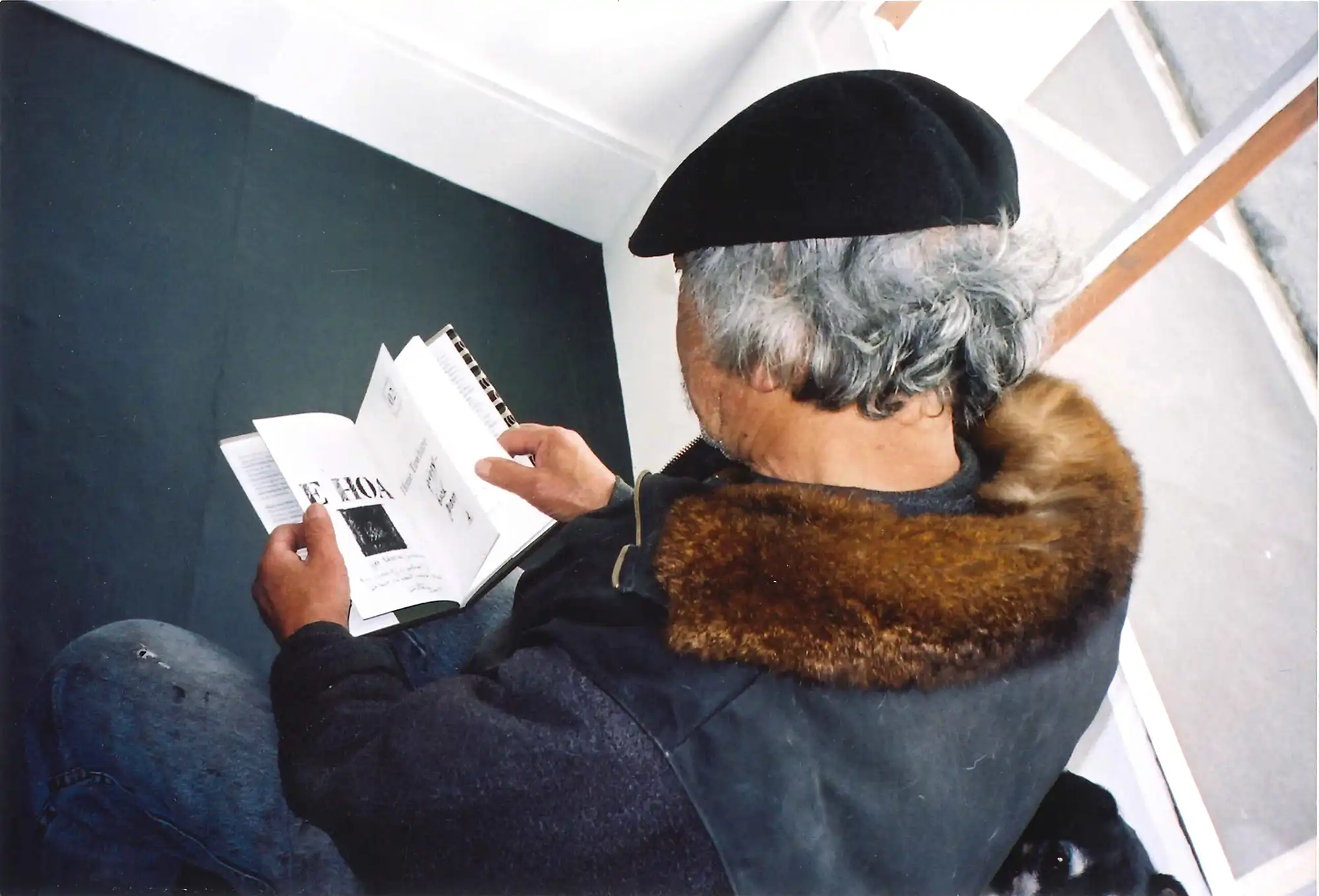
Photograph of Hotere reading Piggy-back moon at Port Gallery, 2001. Private Collection
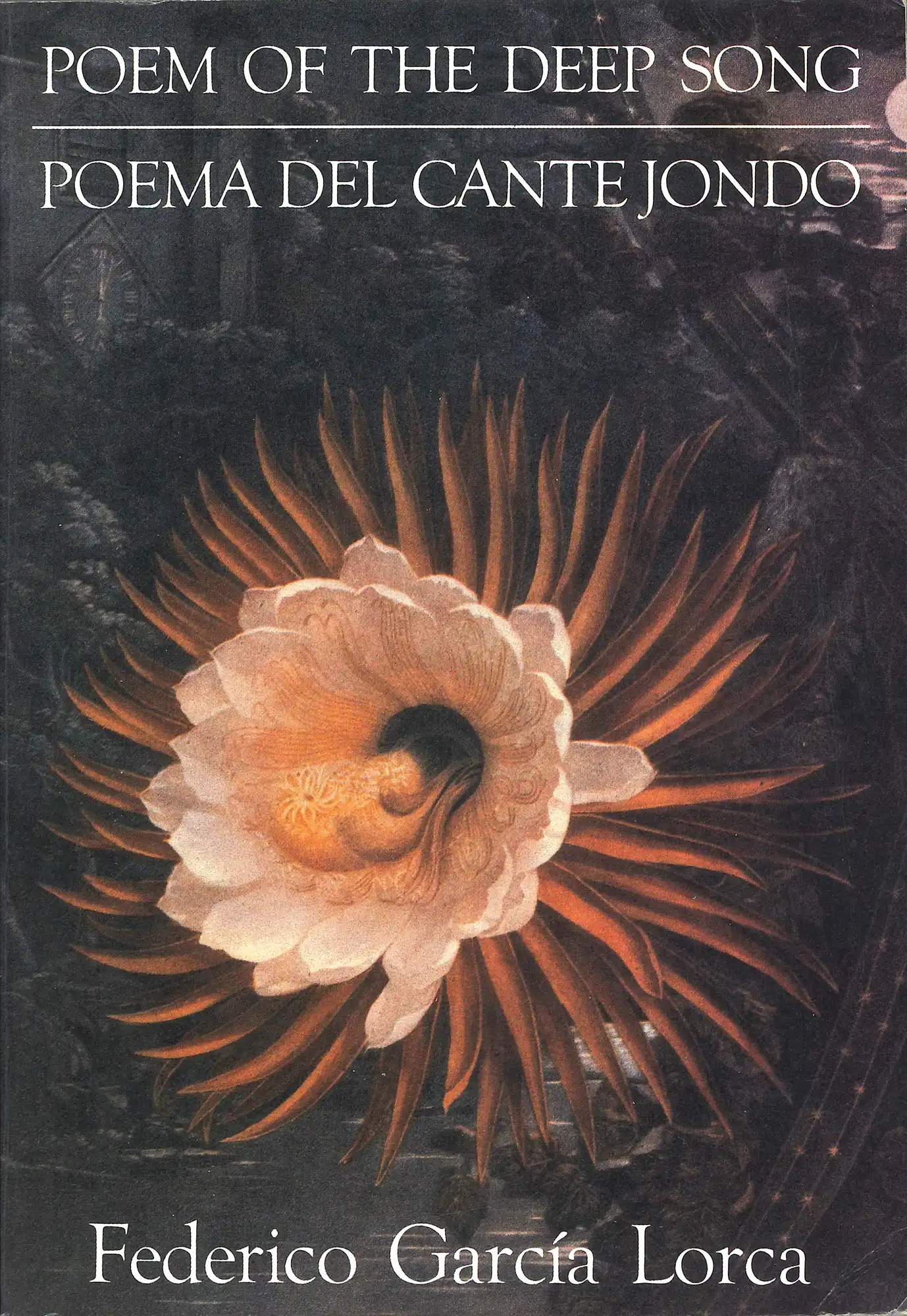
Frederico García Lorca, Poem of the deep song. San Francisco: City Lights Books, 1987. SPRH 861 GAR
Federico García Lorca (1898–1936) was a Spanish poet and playwright, who helped introduce into Spanish literature the notions of symbolism, futurism, and surrealism. Lorca’s blood-red lyrical poetry resonated with Hotere, who, later in Dunedin, enthused over the poet with a young Bill Manhire. One book in Hotere’s collection is a bi-lingual Poem of the Deep Song/Poema del Cante Jondo, which the poet began in 1921 but only finished and published in 1931. This later City Lights edition was gifted to Hotere by Cilla McQueen in 1991. She too must have acknowledged the importance of Lorca to Hotere, who may have easily transfigured portions of the Spaniard’s poems, verbal images provoked by song, into art.

Frederico García Lorca, Poem of the deep song. San Francisco: City Lights Books, 1987. SPRH 861 GAR
Open image in new window
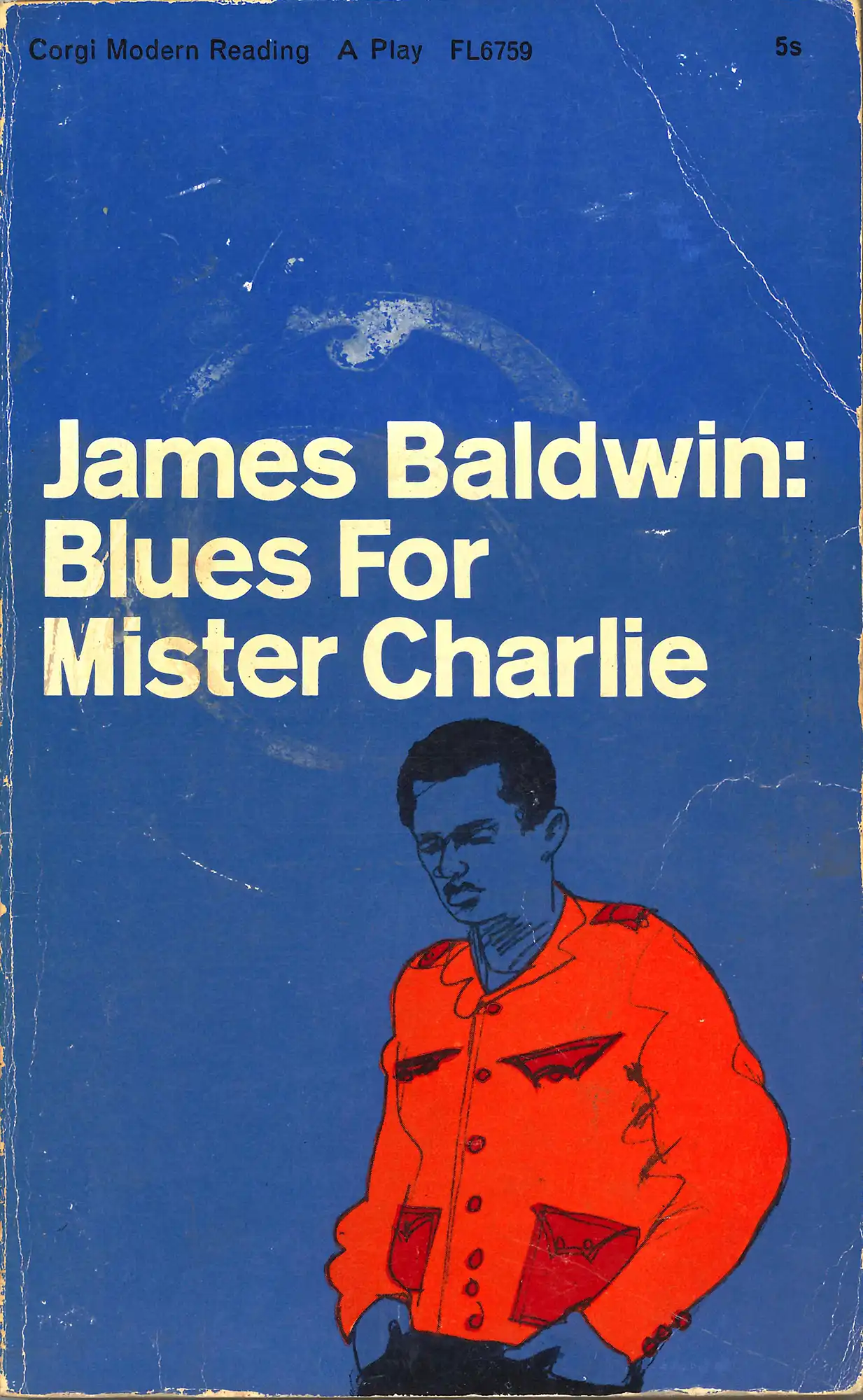
James Baldwin, Blues for Mister Charlie. London: Corgi Books, 1966. SPRH 812 BAL
Hotere did not have a bookplate to paste inside his books and thereby show ownership. To him, ownership was expressed by a simple ‘Ralph Hotere’ or the more common ‘Hotere’, found in most but not all of his books. This paperback edition of James Baldwin’s Blues for Mister Charlie carries a rare alternative: ‘RH’. Baldwin’s three-act play denouncing racial bigotry and hatred was based on a murder trial that took place in Mississippi in 1955. ‘Mister Charlie’ was a phrase used by African Americans for the white man. When it was first produced in 1964, critic Howard Taubman claimed ‘its structure is loose, … but it throbs with fierce energy and passion. It is like a thunderous battle cry’. One wonders what Hotere’s reaction was to the work.
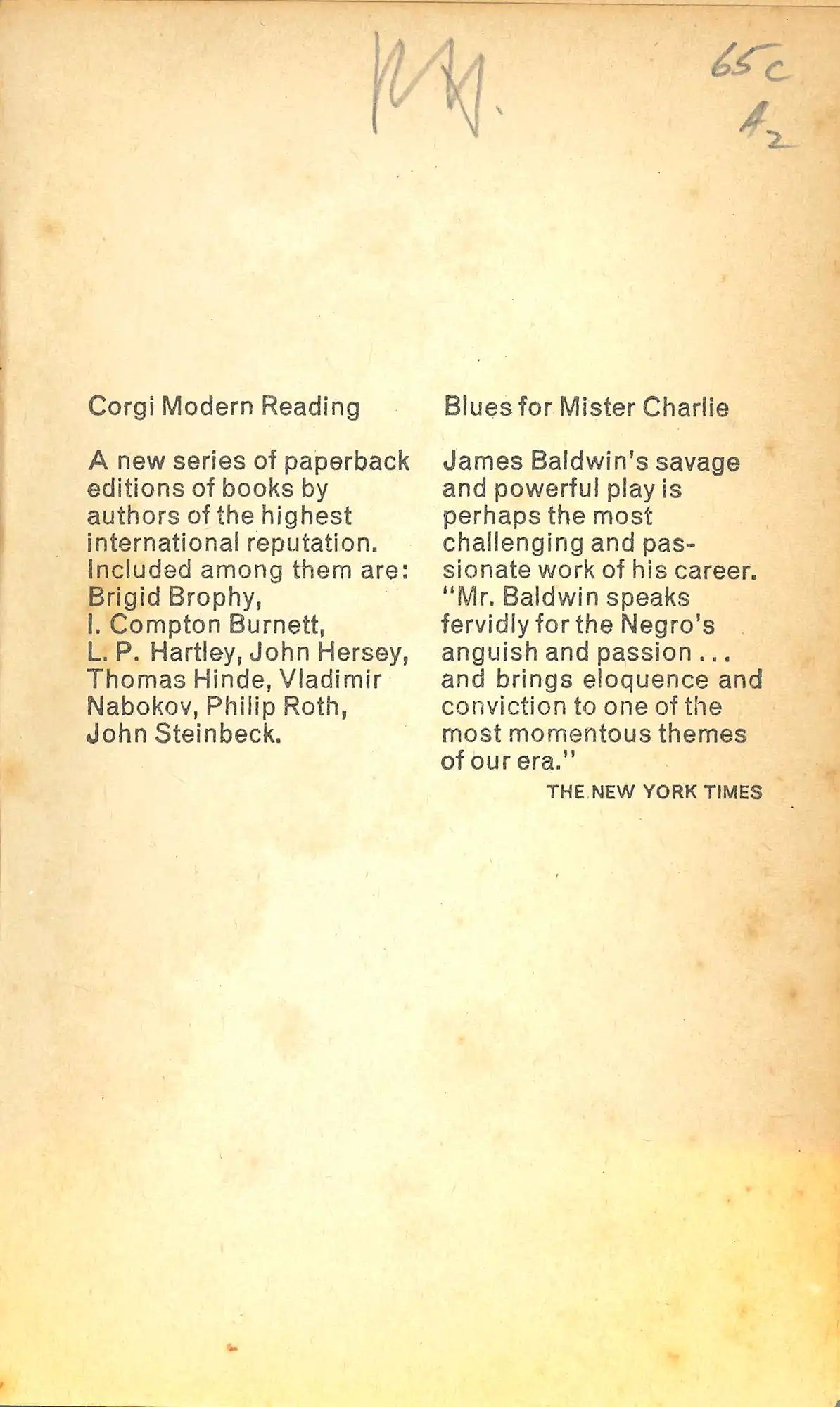
James Baldwin, Blues for Mister Charlie. London: Corgi Books, 1966. SPRH 812 BAL
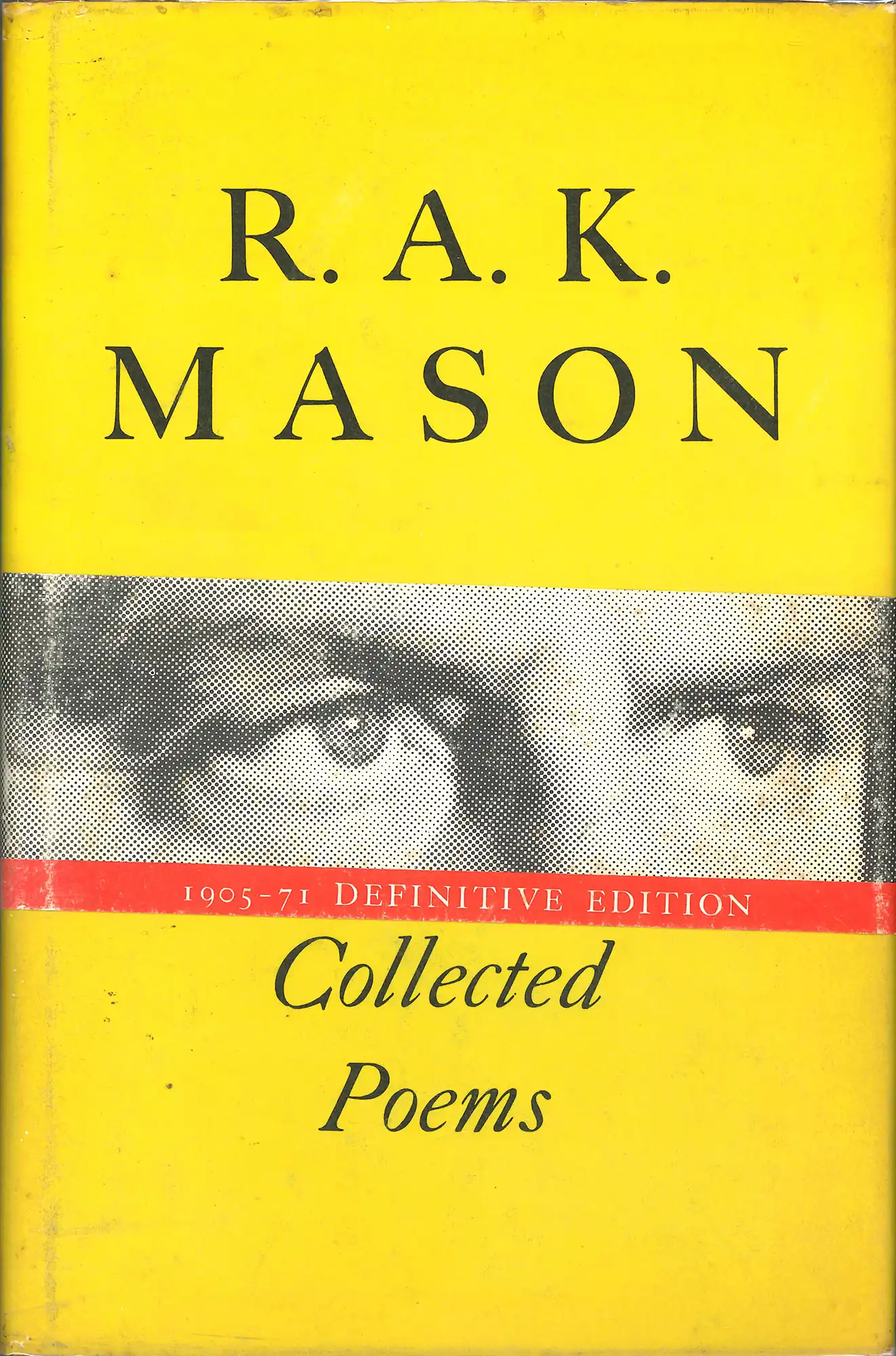
R.A.K. Mason, Collected poems. Christchurch: Pegasus Press, 1971. SPRH 821 MAS
In September 1968, Hotere applied for the Frances Hodgkins Fellowship at the University of Otago. His referees were Bill Pearson, Hone Tuwhare, and Colin McCahon, who stated Hotere was ‘one of the most interesting painters in N.Z. at the time, exploring rather new territory for a New Zealand painter (O’Sullivan, 157). Awarded the Fellowship over artists such as Toss Woollaston and Michael Smither, the $10,000 came in handy, helping pay for food, rent on a house and a studio, a ‘very large house with 8 rooms. The way I work I actually do need the space’ (O’Sullivan, 157). Another who helped establish the Otago Fellowship legacy was poet R.A.K. Mason (1905–1971), the fourth Burns Fellow in 1962. If Hotere bought this copy of Collected Poems, he paid $3.50 for it.






